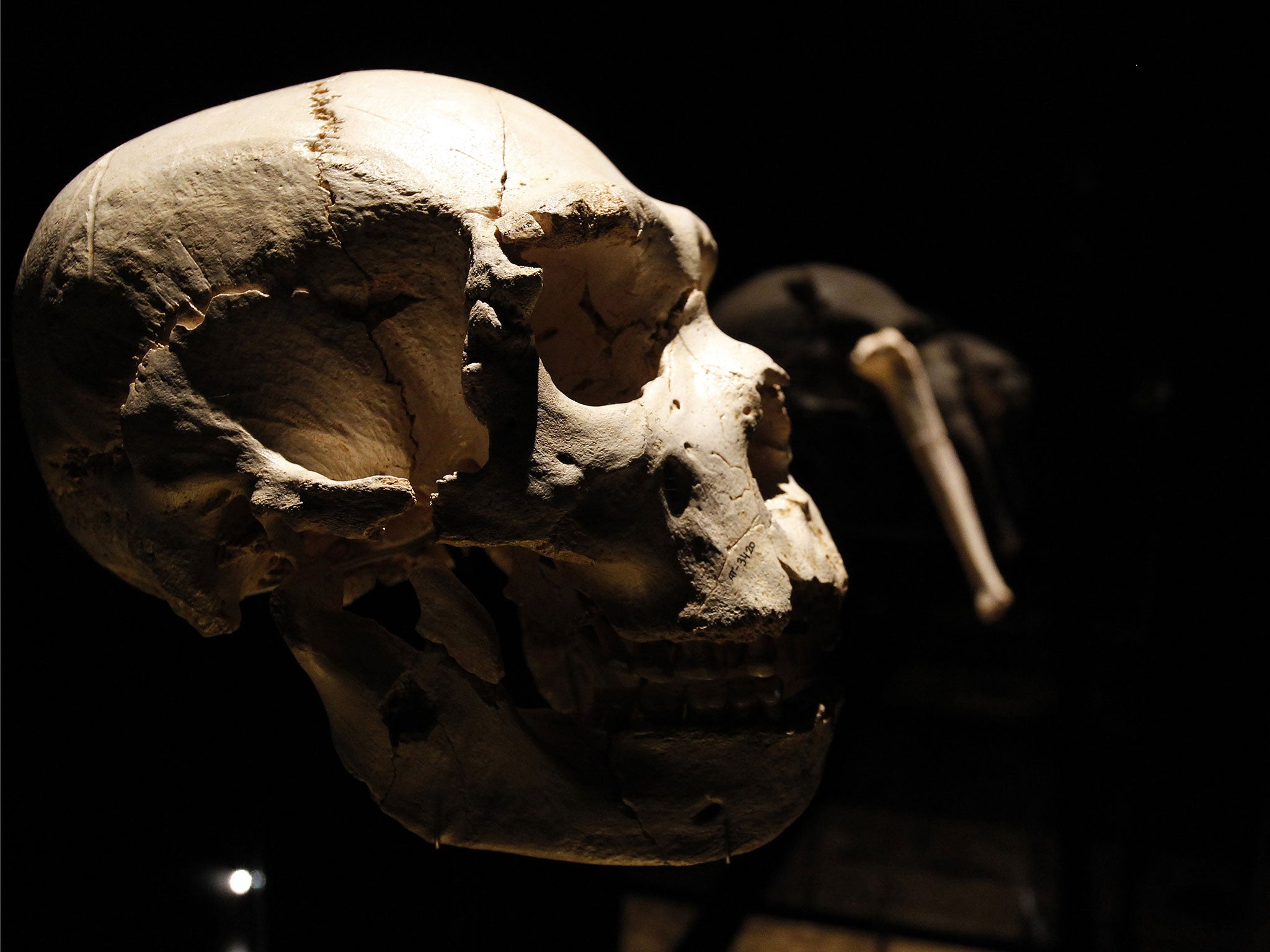Ancient DNA found in ‘Pit of Bones’ shows earliest genetic evidence of Neanderthals
The DNA is from 430,000-year-old bones found in Spain

Your support helps us to tell the story
From reproductive rights to climate change to Big Tech, The Independent is on the ground when the story is developing. Whether it's investigating the financials of Elon Musk's pro-Trump PAC or producing our latest documentary, 'The A Word', which shines a light on the American women fighting for reproductive rights, we know how important it is to parse out the facts from the messaging.
At such a critical moment in US history, we need reporters on the ground. Your donation allows us to keep sending journalists to speak to both sides of the story.
The Independent is trusted by Americans across the entire political spectrum. And unlike many other quality news outlets, we choose not to lock Americans out of our reporting and analysis with paywalls. We believe quality journalism should be available to everyone, paid for by those who can afford it.
Your support makes all the difference.The earliest genetic evidence of Neanderthals dating back more than 400,000 years has been discovered following the repeated DNA mapping from ancient human bones.
The bones, found over 30 years ago in deep cavern known as the Sima de los Huesos, or “Pit of Bones,” in Spain. But results published in the journal Nature have shown that following repeated testing of the DNA recovered from the site, molecular biologist Matthias Meyer at the Max Planck Institute for Evolutionary Anthropology and his team were able to decode and sequence the ancient genomes.
Mr Meyer and his team were able to extract nuclear and mitochondrial DNA from the well preserved Sima bones, ending speculation over which species they belonged to, Nature reports.
A previous report using a sequenced genome from one of the Sima hominin’s femur in 2013 had suggested the ancient people may have been from the Denisovans, a group of ancient humans found in Siberia, rather than European Neanderthals, despite the bones showing Neanderthal characteristics.
But due to the careful preservation of some teeth and shoulder blade tissue recovered from the site 10 years ago and the advances in molecular analysis since 2013 meant Mr Meyer was able to prove the Sima hominins are early Neanderthals.
The “Pit of Bones” is found in Spain’s Atapuerca mountains and the skeletal remains of 28 ancient bodies have been found in the cavern, along with ancient animal bones. It is not known whether the early Neanderthals had fallen down the pit to their death or if they had been buried there deliberately.
Join our commenting forum
Join thought-provoking conversations, follow other Independent readers and see their replies
Comments